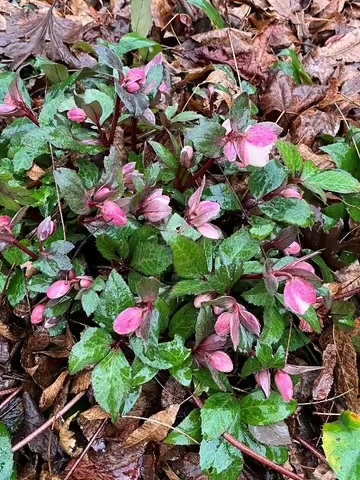One of my many pleasures from gardening is watching the garden develop and change over the course of a season. It never ceases to amaze me how stark, yet beautiful the landscape is in its winter rest. With the leaves gone, the beautiful bark and limb structure of the trees and shrubs is completely exposed, becoming the garden’s prominent feature. All else is a study in brown aside from an occasional splash of green from the various evergreens.
Over the years, many plants in the garden have been moved from their original site, sometimes more than once to provide a better composition or growing condition. Editing for the winter garden is no exception. The actual editing is usually not done until very late winter to early spring but making note of what needs to be done can be accomplished with every winter walk. For example, winter-blooming hellebores (Helleborus sp.) that have spread sufficiently can be slated for spring digging/division and used elsewhere. Make sure you know when best to dig and divide other perennials. Some like peonies, martagon lilies and iris prefer a fall transplanting…not that a spring transplant will kill them, but rather results in a failure to bloom that year. And where you need a plant but don’t have one to recycle, shopping is an enjoyable option. Winter is also the best time to see the overall structure and condition of the trees and shrubs in the landscape for assessing pruning needs. In addition to removal of diseased or damage material, identify pruning needs to maintain structure, form and size.
It’s also that time of the year when vegetable gardeners start thinking about planting needs for the coming season. Historically, the last average spring frost occurs in the St Louis Metro East roughly between March 20 and April 29, with a median last spring frost date around April 11. Counting back four to six weeks from the median date as a reference for planting very hardy vegetables, the week of Feb 27 through the week of March 13 would be the recommended safe planting window. Planting very hardy vegetables after this window increases the risk of bolting. Gardeners who are direct seeding or purchasing transplants locally have plenty of time, but gardeners who are growing their own transplants need to begin their season sooner by starting transplants five to six weeks before the intended planting date.

